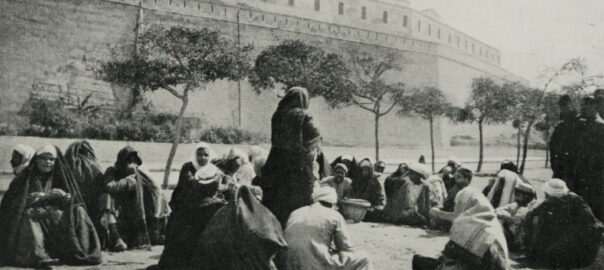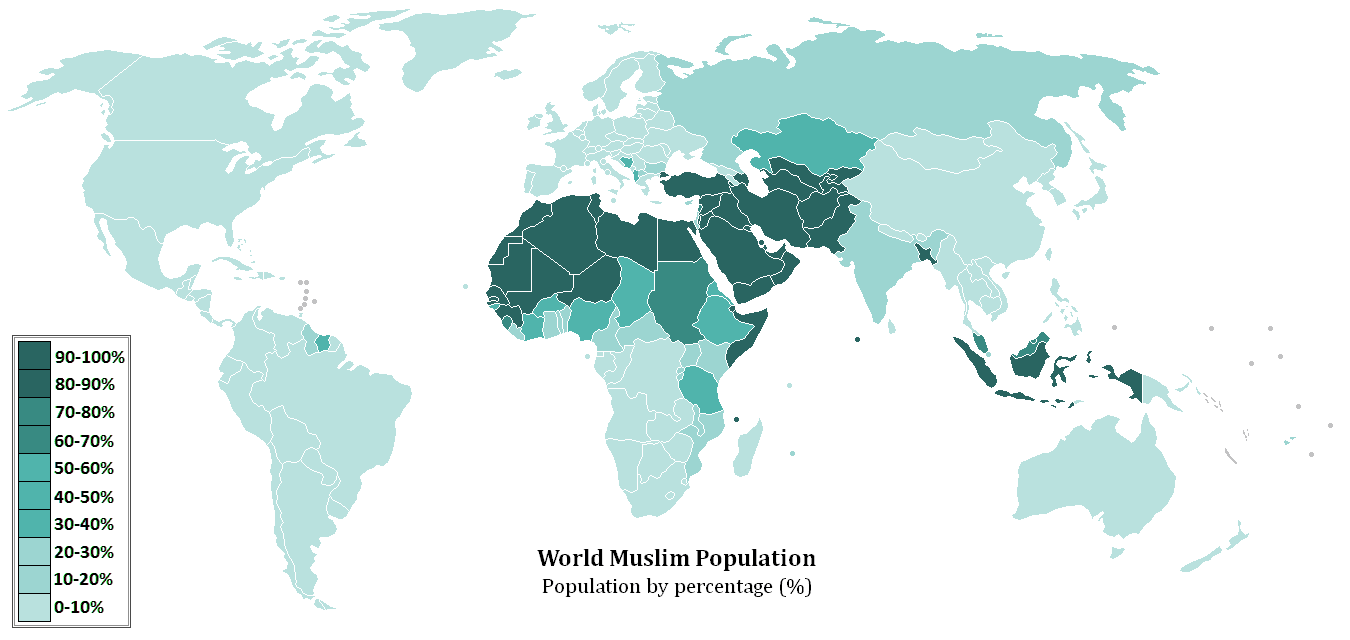
Muhammad: Origins of Islam:
Moral and Social Reform
Muhammad was convinced that social reform must be founded on a new spiritual solution, or it would remain superficial. Here are a few examples of the changes he instigated.
Muhammad and his Believers were pushed into conflict with the Quraysh when desperation forced some Believers to send out a ghazu raid to disrupt and loot Quraysh caravans. Unfortunately, this occurred during the sacred month, so it galvanized the Quraysh and resulted in the Battle of Badr in 624 CE. A thousand Quraysh, some on horseback, met the smaller Muslim group, but the latter, although poorly equipped, were highly motivated and won.

On Warfare
The Prophet Muhammad and his companions patiently bore vehement persecution in Mecca for nearly 13 years. This included a three-year starvation boycott which lead to his wife Khadija’s death. The situation worsened so that Muhammad sent some of the Believers to Abyssinia to seek refuge under a Christian king. When the Prophet’s companions asked to fight back, Muhammad told them, “I have not been given permission to fight.” And, finally, when the persecution became unbearable, Muhammad and the Muslims simply left Mecca – still refusing to fight back.
They trekked 240 miles through the desert to escape these aggressors, finally arriving in the predominantly Jewish city of Medina where the Prophet was invited to act as conciliator between fractious Jewish and pagan tribes. Muhammad, in his new role there as head of state, formed what is known as the Constitution of Medina which established a unified secular state.
Yet the extremists from Mecca pursued the Community and – finally – the Qur’an addressed fighting for the first time, permitting them to fight, but only in self-defense. (Qur’an 22:40-41) “Permission to fight is given to those against whom war is made, because they have been wronged—and Allah indeed has power to help them.” And fighting wasn’t just to defend Muslims from persecution, but to defend Christians, Jews, and people of all faiths that were under Mohammad’s protection. All subsequent verses addressing fighting are pre-conditioned on these clearly outlined rules of self-defense. For example, “And fight them until there is no persecution, and religion is freely professed for Allah. But if they desist, then remember that no hostility is allowed except against the aggressors.” (Qur’an 2: 194)
So, according to the Qur’an, Muslims may only fight active combatants. And if during battle an enemy combatant asks for amnesty, a Believer must grant it.
Prisoners of War
The Prophet instructed that prisoners of war should be treated as if they were family members. He favored freedom after restitution. Those who could not pay monetary restitution were asked to teach ten individuals to read and write.
According to Cherif Bassiouni of DePaul University (Chicago, IL) this is the first time in recorded history that POWs were treated humanely as a policy.
Here there were no class distinctions; the value of one man was not higher than another’s.
The Quraysh attacked at the Battle of Uhud two years later. This resulted in approximately seventy of the 700 Believers killed and those taken prisoner by the Quraysh were tortured and mutilated. In the fifth year after the Hijra a third major confrontation occurred, the Battle of Khandaq (the Trench). This time the Believers took the advice of a Persian and dug a trench along the side of the city most vulnerable to attack. The episode resulted in a victory for the Muslims without a battle actually being fought. The Quraysh, who had never encountered such a situation in battle, were unable to cross it and eventually turned back, defeated.
The community of Believers expanded rapidly since anyone from any culture, race or tribe could join the ummah by simply declaring: “There is no god but God, and Muhammad is God’s Messenger.” As head of the ummah, Muhammad undertook the protection of every member. Here there were no class distinctions; the value of one man was not higher than another’s. Muhammad urged against the traditional tribal Law of Retribution towards forgiveness: “The retribution for an injury is an equal injury, but those who forgive the injury and make reconciliation will be rewarded by God.” (Qur’an 42:40)
The community of Believers expanded rapidly since anyone from any culture, race or tribe could join the ummah by simply declaring: “There is no god but God, and Muhammad is God’s Messenger.”
Usury was forbidden and taxes were replaced by a tithe called zakat whereby everyone gave according to his means to provide care for the less fortunate: “True piety does not consist in turning your faces towards the East or the West – but truly pious is he who believes in God, and the Last Day; and the angels, and revelation, and the prophets; and spends his substance – however much he himself may cherish it – upon his kin, and the orphans, and the needy, and the wayfarer, and the beggars, and for the freeing of human beings from bondage; and is constant in prayer, and renders the purifying dues; and [the truly pious are] they who keep their promises whenever they promise, and are patient in misfortune and hardship and in time of peril: it is they that have proved themselves true, and it is they, they who are conscious of God.” (Qur’an 2:177)
Women’s Rights
Women’s rights and privileges were foremost in Muhammad’s struggle for social and economic egalitarianism. Here are some of the areas addressed:
- The Qur’an (in 33:35) emphasizes the equality of the sexes in the eyes of God in all but physical strength, which men should use to provide for women.
- Muhammad said: “Women are the twin-halves of men.”
- He changed the laws of inheritance so that women could inherit and maintain their own wealth and their husband’s in the event of his death.
- Women could now keep their marriage dowries as their own personal property, even if they became divorced.
- For the first time he gave women the right to divorce their husbands if they feared cruelty or ill-treatment. (Qur’an 4:128)
- For the first time he limited the number of wives a man could have. He accepted that men should be able to have up to four wives, with one proviso: “only if you can treat them all equally.” (Qur’an 4:3)
- He did not allow women to have more than one husband. The scholar Reza Aslan describes this step as one that was necessary to ensure the survival of the community at Yathrib, which, after war with the Quraysh, resulted in hundreds of widows and orphans who needed to be provided for and protected.
- The tradition of women wearing a veil was borrowed from the upper classes of Iranian and Syrian women and used by Muhammad’s wives as an identifier and for their protection. Though modesty was required of all Believers, during the Prophet’s lifetime only his wives wore a veil (Hijab).
- As Leila Ahmed and others have observed, nowhere in the Qur’an is the term hijab applied to any other women.

By the year 630 CE Muhammad had become the powerful leader of an expanding community and was able to lead 10,000 Believers back to Mecca for the Hajj, a pilgrimage that remains a cornerstone of the spiritual life of Muslims. There the same people who had tried to murder him now offered him the keys to the Ka’ba unconditionally and without a fight. From that time on he was generally accepted by the faithful as the true, final Prophet of God and continued to lead his community both spiritually and in earthly matters until his death in 632.
